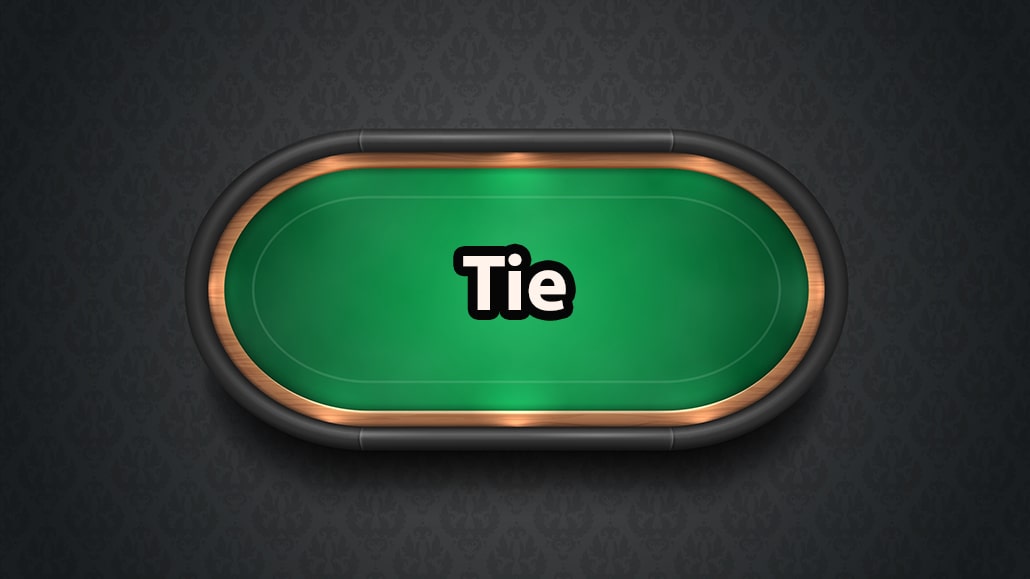What Is A Tie In Poker?

In poker, a “tie” occurs when two or more players have hands of equal value at the showdown. In these situations, the pot is divided equally among players with tied hands.
If there are two players in the hand that share the winning hand of the same value, the pot will be divided into two equal parts and distributed amongst them. In situations where there are three players that have the same winning hand, the pot will be divided into three equal parts, and each player will receive one-third of the pot.
It is important to note that since it is uncommon for two or more players to have hands of the exact same value. Ties are relatively rare in most types of poker games.
With this said, there are some games, such as Hi-Lo, where players compete to make both the highest and the lowest possible hand, in which ties can occur more frequently.
Poker Tie Example:
You are holding Ks 7d in a hand of Texas Holdem, and your opponent is holding Kc 8d, the board is Kd Js Jd Ts 2c, and there is $100 in the pot.
The best possible hands that can be made:
- You: Ks Kd Js Jd Ts
- Your Opponent: Kc Js Jd Ts
Since both you and your opponent can make the exact same best possible poker hand because the kicker does not play here, each of you will receive 50% of the pot or $50.
ONLINE POKER:
RESOURCES:







